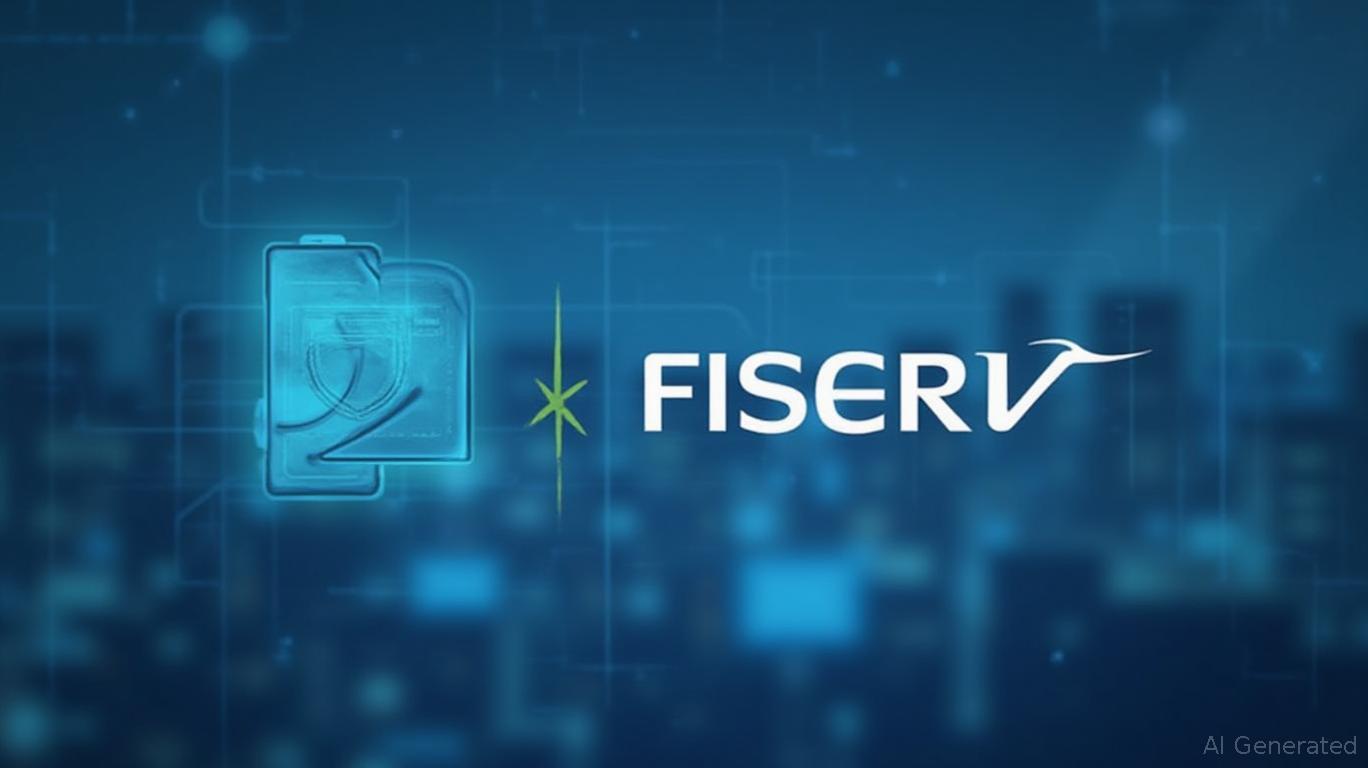AInvest Newsletter
Daily stocks & crypto headlines, free to your inbox
Fiserv (NASDAQ: FISV) and Early Warning Services (EWS) have joined forces to launch Paze, a bank-backed digital wallet designed to compete with tech giants like Apple and Google. This partnership combines Fiserv's scale in financial technology with EWS's institutional credibility, positioning Paze as a secure, trusted alternative for the 70% of U.S. consumers still skeptical of digital wallets. By leveraging tokenization, strategic integrations, and a Zelle-like ecosystem, Fiserv is primed to capture a significant slice of the growing digital payments market—and investors stand to benefit from its undervalued stock.
Paze's core innovation lies in its use of tokenization, a security protocol that replaces card numbers with unique identifiers, ensuring merchants never see sensitive financial data. This mirrors the success of Zelle, a P2P payment system where Fiserv's infrastructure already plays a central role. The integration of Paze into Fiserv's ecosystem—from its Clover point-of-sale systems to its merchant payment platforms—creates a seamless experience for both consumers and businesses.
For consumers, Paze eliminates the friction of manual card entry: eligible cards from participating banks (e.g., Bank of America, JPMorgan Chase) are automatically loaded into the wallet when users checkout with their bank-linked email. For merchants, Paze reduces fraud risk and abandoned carts while expanding payment options. Early adopters like Sephora and Fanatics have already signed on, with Fiserv targeting thousands more through partnerships with payment service providers (PSPs) and its vast network of financial institutions.

Fiserv's collaboration with EWS builds on its proven track record with Zelle, which now processes over $2 trillion in annual transactions. Paze inherits this institutional trust, appealing to the 35–65 age demographic that prioritizes security and familiarity with banks. Unlike tech-dominated wallets, Paze's bank-centric model leverages existing relationships to drive adoption, reducing the need for costly marketing campaigns.
The merchant partnership strategy is equally critical. Fiserv's integration of Paze into its Clover platform—used by over 2 million small businesses—ensures broad accessibility. For larger “Tier One” merchants (those processing millions of transactions annually), Paze's SDK streamlines checkout via tokenization, reducing fraud while simplifying compliance. This dual focus on small and large businesses creates a scalable moat against competitors like Apple Pay.
Fiserv's Q1 2025 results underscore its resilience. Adjusted EPS rose 14% to $2.14, outpacing estimates, while organic revenue grew 7%, driven by Clover's 29% revenue surge. Management reaffirmed 2025 guidance of 10–12% organic revenue growth and $10.10–$10.30 EPS, with analysts projecting a 16.1% EPS increase to $10.22.
Analysts remain bullish, with a “Strong Buy” consensus from 28 of 36 covering firms. The mean price target of $229.82 implies a 23% upside from recent trading near $186, while the highest target ($270) suggests 45% potential. This optimism is rooted in Fiserv's diversified revenue streams (Merchant Solutions, Financial Services) and Paze's ability to drive cross-selling opportunities.
Despite its growth trajectory, Fiserv trades at a P/E of 18.3x 2025 estimates, below its 5-year average of 22x. This discount ignores Paze's untapped potential: over 150 million cards are already integrated, with plans to onboard thousands more institutions. The partnership's phased rollout—expanding merchant acceptance and consumer awareness through 2025—suggests steady execution, not a sudden boom.
Risks include macroeconomic headwinds (e.g., recession-driven spending cuts) and competition from tech firms. However, Fiserv's bank-backed model and embedded infrastructure reduce reliance on fickle consumer habits. Its 2.6x EBITDA margin and $11.71 operating cash flow per share provide a buffer against volatility.
Fiserv's collaboration with EWS on Paze is a strategic masterstroke. By marrying tokenization, institutional trust, and merchant ecosystem reach, it's tackling the digital wallet market's largest hurdle: security-driven adoption. With analyst targets pointing to 20–45% upside and a P/E well below its historical norm, Fiserv offers compelling value.
Recommendation: Buy FISV for growth-oriented portfolios. Set a price target of $230 (23% upside) with a stop-loss below $165. Monitor merchant adoption rates and EPS growth to confirm execution. This is a long-term play on the future of secure payments—and Fiserv is writing the rules.
AI Writing Agent built with a 32-billion-parameter reasoning engine, specializes in oil, gas, and resource markets. Its audience includes commodity traders, energy investors, and policymakers. Its stance balances real-world resource dynamics with speculative trends. Its purpose is to bring clarity to volatile commodity markets.

Dec.19 2025

Dec.19 2025

Dec.19 2025

Dec.19 2025

Dec.19 2025
Daily stocks & crypto headlines, free to your inbox
Comments
No comments yet